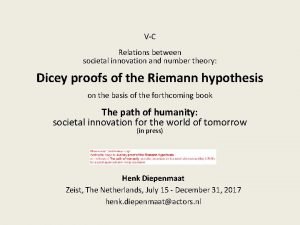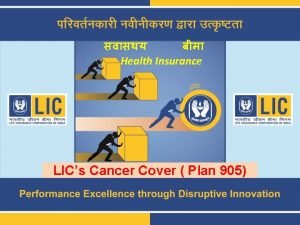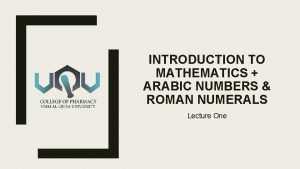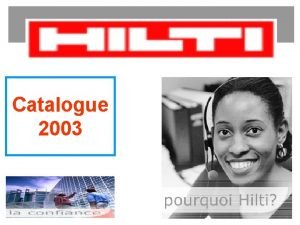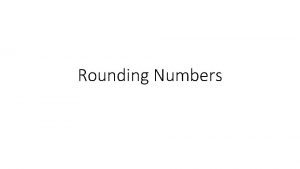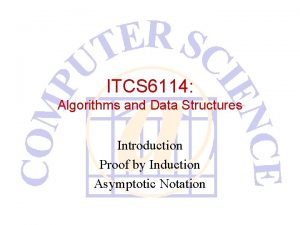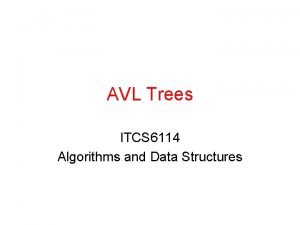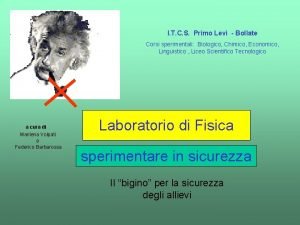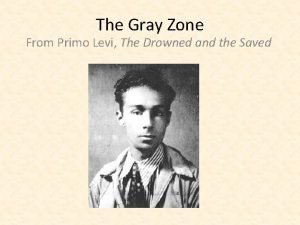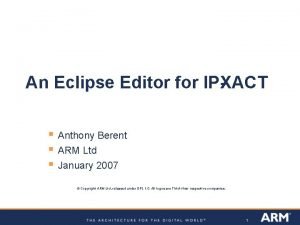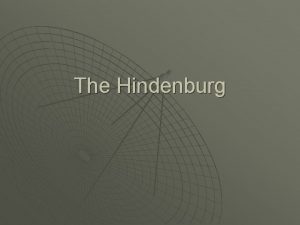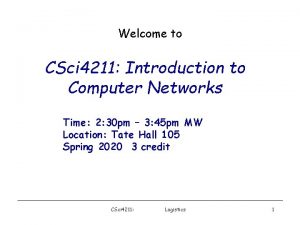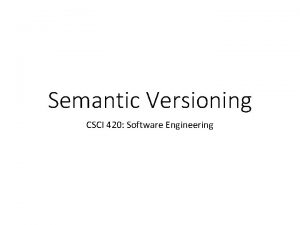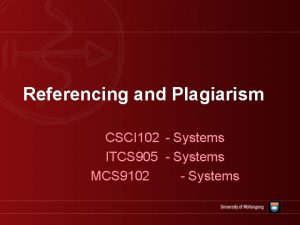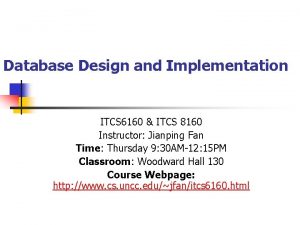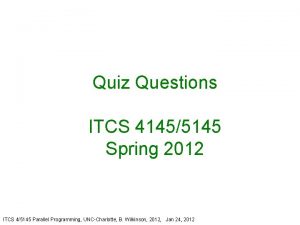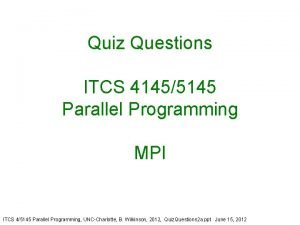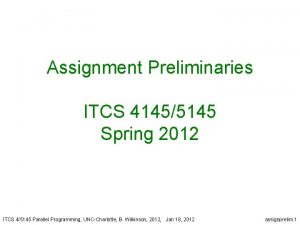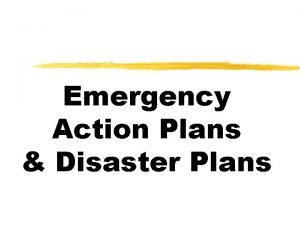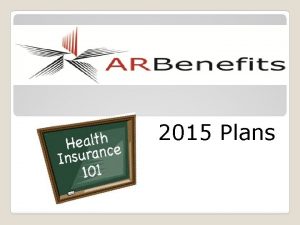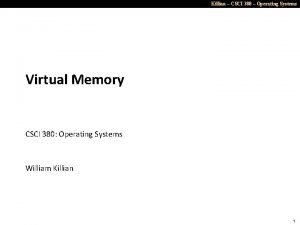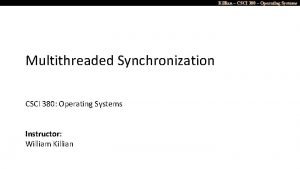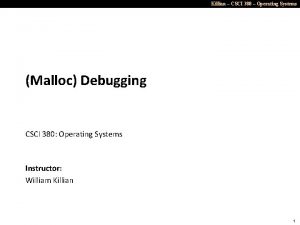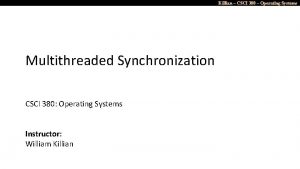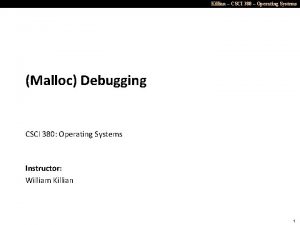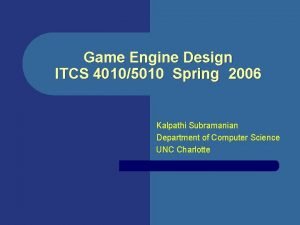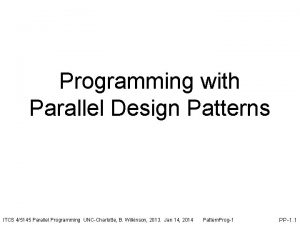Design Plans CSCI 102 Systems ITCS 905 Systems




















- Slides: 20

Design Plans CSCI 102 - Systems ITCS 905 - Systems MCS 9102 - Systems

What is a Design Plan • What function does the design document perform? – The design document is the primary tool by which the detail and the vision of the project is communicated to a wider audience. – The document promises to explain how the project will be executed in the best possible way 2

Role of the Design Document • After you have identified your customer’s needs and designed a solution, the next step is to communicate your solution to the customer and explain how it meets the needs • A design document: – Is an excellent tool to help you communicate your solution – Whether you are responding to a request for proposal (RFP) or submitting an unsolicited proposal 3

Role of the Design Document • If the customer provides you with a Request For Proposal (RFP): – Design document should follow format specified in the request – Some RFPs are strict, and a proposal will be rejected if it does not follow the specified format exactly – NOTE: You have NOT been given an RFP 4

Four(4) Guiding Principles • The task of writing the design document needs to be guided by the following – Functionality: will the end product work? – Scalability: is the solution able to grow without major problems? – Adaptability: will the project be able to incorporate new technologies in the future? – Manageability: can we monitor the system and make necessary changes easily? 5

Functionality • Functionality: – Does the proposed solution support each job function so that strategic goals can be attained? – Can you extract sufficient information from your structure to provide all the necessary information? – What does your design solution do? 6

Scalability • Any design must allow for future growth • This should consider the limitations of your chosen technology and indicate potential growth paths – Eg Excel • 65, 536 rows by 256 columns max • Number precision 15 digits • You should identify any limitations of XML – Particularly as it applies to your assignment 7

Adaptability • Design Criteria should incorporate possible changes to design through the advent of new technology • The design should not have features that makes the future provisioning of new technology impossible 8

Manageability • The proposed system should facilitate both monitoring and manageability of the full system 9

Contents of a Design Plan • • • 10 Cover sheet Executive Summary Table of Contents Introduction Design Criteria Requirements Project Specifications Architectures Conclusions

Cover sheet • • • 11 Project title Document version Document author Document date Document History

Introduction • • 12 Purpose of report and project Scope Main sections of report Restrictions/limitations

Design Criteria • Design criteria are the explicit goals that a project must achieve in order to be successful – In recommendation and feasibility reports the design and decision criteria determine the document's final recommendation for action – Managers use these criteria as their basic tool in evaluating a project's potential for success and how well it fits into the goals of the organization – Experts need explicit design and decision criteria in order to evaluate recommended designs of devices and test procedures. 13

Design Criteria • Primary criteria are those that constitute a successful project – the project will be unsuccessful if it does not meet these goals • Secondary criteria are those features that are highly desirable but not absolutely essential • Separating primary and secondary criteria establishes a clear hierarchy in design choices – Implementing one criterion makes the implementation of another infeasible or costly – A secondary criterion may be sacrificed in favour of a primary criterion. 14

Design Criteria • Make your design criteria short but as specific as possible – Avoid vague language – List your primary criteria first – Then list the secondary criteria • Design criteria are often best displayed in bulleted lists – Short titles preceding the explanation – These titles may then be used later in the document to refer to the specific criteria being discussed 15

Requirements/Project Specifications • • 16 Original specifications Project Goals Client expectations In a formal design document you would need to also detail how you will ensure that requirements have been met

Requirement Types • Core requirements are features that are deemed necessary • Features that are desirable but could be installed at a later date • Rejected requirements are either not really necessary or not desirable • Requirements are normally categorised during the analysis phase 17

RFC 2119 keywords • The IETF’s RFC 2119 identifies the following keywords to describe relative importance 18 Keyword Must/Shall/Required Type of Requirement Core Must Not/Shall Not Core Should/Recommended Should Not/ Not Recommended May/Optional Feature or Future Feature, Future or Rejected

Architecture • Describe your recommended solution – Along with the features and benefits it provides • Information to be stored • Mind map detailing the fields you will use in your project and relationships between them • Organize the content: – According to client’s needs – Listed in order of client’s priorities 19

Conclusions • In addition to the normal conclusion elements • You should outline the main features of your solution and explicitly show it meet the original request 20
 Franz mertens
Franz mertens Lic cancer cover plan 905
Lic cancer cover plan 905 The real arabic numbers
The real arabic numbers Mandrin te 905
Mandrin te 905 P 905
P 905 Round 905 to 1 significant figure
Round 905 to 1 significant figure Itcs 6114
Itcs 6114 Itcs 6114
Itcs 6114 Ecu itcs
Ecu itcs Itcs primo levi bollate
Itcs primo levi bollate Primo levi the grey zone
Primo levi the grey zone Csci 530 security systems
Csci 530 security systems Csci 530
Csci 530 Csci430
Csci430 Xact design & plans
Xact design & plans Hindenburg design plans
Hindenburg design plans Csci 4211
Csci 4211 Csci 530
Csci 530 Contoh knapsack problem
Contoh knapsack problem Major minor patch build
Major minor patch build Scott warfield ucf
Scott warfield ucf
